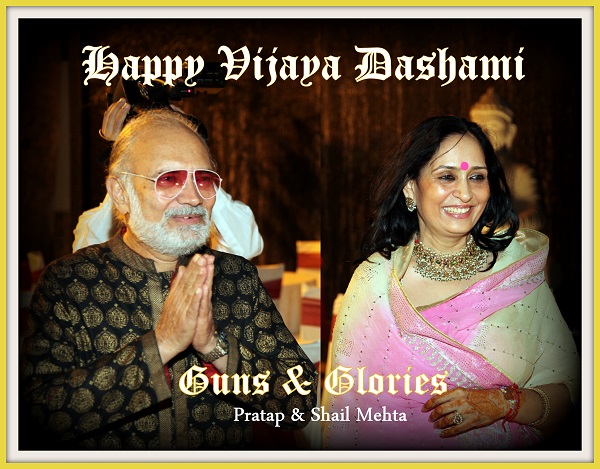What is the significance of Dussehra or Vijaya Dashami for Bachhawats?
विजया दशमी पर्व की हार्दिक शुभकामनाएं..! Since long I have always been fascinated by the glory of Mandalgarh Fort and the Bachhawat Mehtas who governed this fort for centuries. Time has come to pay floral tributes to the prescient beauty and glory of this fort. It is a matter of great satisfaction that my dream is fructifying today. These pieces of memoirs should only be considered as expression of my emotions and imaginations towards the legacy left behind by our ancestors.
Dusserah and Diwali were two other important festivals celebrated by Bachhawat Mehtas, both having their origin in the famous epic, ‘Ramayana’. Dusserah came at the end of the rains and symbolised the victory of good over evil, in the shape of the famous battle between Lord Rama of Ayodhya and the demon King Ravana of Lanka. For the warrior class Dusserah also meant the taking out of weapons, which had been stored away during the rains, for oiling and putting in good order, for use during hostilities. There was conventional ban on carrying out warfare during monsoon months, which war-lords observed scrupulously.
In our haveli at Udaipur, a Brahim Bhojan (inviting Brahmins to a feast in the haveli) was organised on Vijaya Dashami, as an act of piety. Their numbers varied from twenty or so to an entire Brahmin sub-caste, such as Gujargaurs and Menarias, in which case the numbers would go up to 200 or even more. The menu for such occasions consisted of Jhakolma Purees (large, thin, round tortilla fried in Ghee), and five different kinds of sweets (Panch Pakwan), apart from dal and vegetables. Invitations would be carried by word of mouth and every male member of the concerned sub-caste would be welcome to the meal. Each one of them was also given a Dakshina (gift), usually a one-rupee silver coin, as he left haveli after dinner.
This beautiful Rajasthani Painting “Dassehra Durbar”, of Mewar, depicts the king seated against a bolster in court. He is wearing a white dress.

